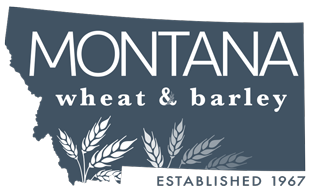Partner Spotlight
The Chinese market is one that is both exciting and frustrating for Montana small grains producers. Looking at the potential for high quality wheat imports, along with Montana’s excellent logistics to Asia, it is a pretty enticing country to focus on. However, add in some difficult trade barriers and sanitary-phytosanitary (SPS) issues, and it can become very trying.
First, a quick overview. China is one of the largest wheat producers in the world, and the Chinese government has remained very committed to maintaining a 95% rate of self-sufficiency in both wheat and rice production. This is one of the reasons why we see so many corn and soybean exports headed there, and wheat does not necessarily follow the same trend.
There are two major SPS issues regarding wheat imports to China. The first is TCK (Tilletia Controversa Kuhn). TCK is a fungus known to cause the smut disease in both soft white and hard red winter wheats. This plant pathogen stunts the growth of the plants and leaves smut balls in the grain heads, which emits a fishy odor when milled. From 1974 to 1999, China applied a zero-tolerance policy on TCK spores, and banned shipments of grain from the Pacific Northwest. After the 1999 US-China Agricultural Cooperation Agreement, a tolerance level of 30,000 spores per 50-gram composite sample was put into place. This has facilitated movement out of the PNW, but remains a concern.
The second SPS issue is ergot. In an infected plant, chemicals that are toxic to both humans and animals are produced, and any flour or feed made from ergot infected grains will be toxic. China has the tightest ergot specification of any country in the world at 0.01% maximum, versus the US standard of 0.5%
There are several additional trade barriers that have been put into place in order for the Chinese market to maintain that 95% rate of self-sufficiency. The United States Trade Representative brought two of these issues in front of the World Trade Organization in 2016. The first addressed the minimum price support received by Chinese growers, and the second was in regards to transparency and utilization of China’s Tariff Rate Quota (TRQ) allocation system. The US was successful in these WTO filings, and when these wins are coupled with the Phase 1 commitments of January 2020, the US did see a substantial increase in Chinese wheat imports in 2020.
Over the past 5 years, US wheat exports to China have looked like this:
Hard Red Spring 44%
Hard Red Winter 35%
Soft White 15%
Hard red spring typically dominates the imports, but the ergot specification can be challenging across the northern plains in high rainfall years.
The flip side to the many trade issues are the highly sophisticated end users in the Chinese market. These are high-tech companies serving a more and more affluent middle class. The need for a consistent and reliable end use product is becoming more important, and that is good for Montana. At this point, it is a difficult market to count on, but certainly one that can affect the demand and create competition for US wheat purchases on any given year.

